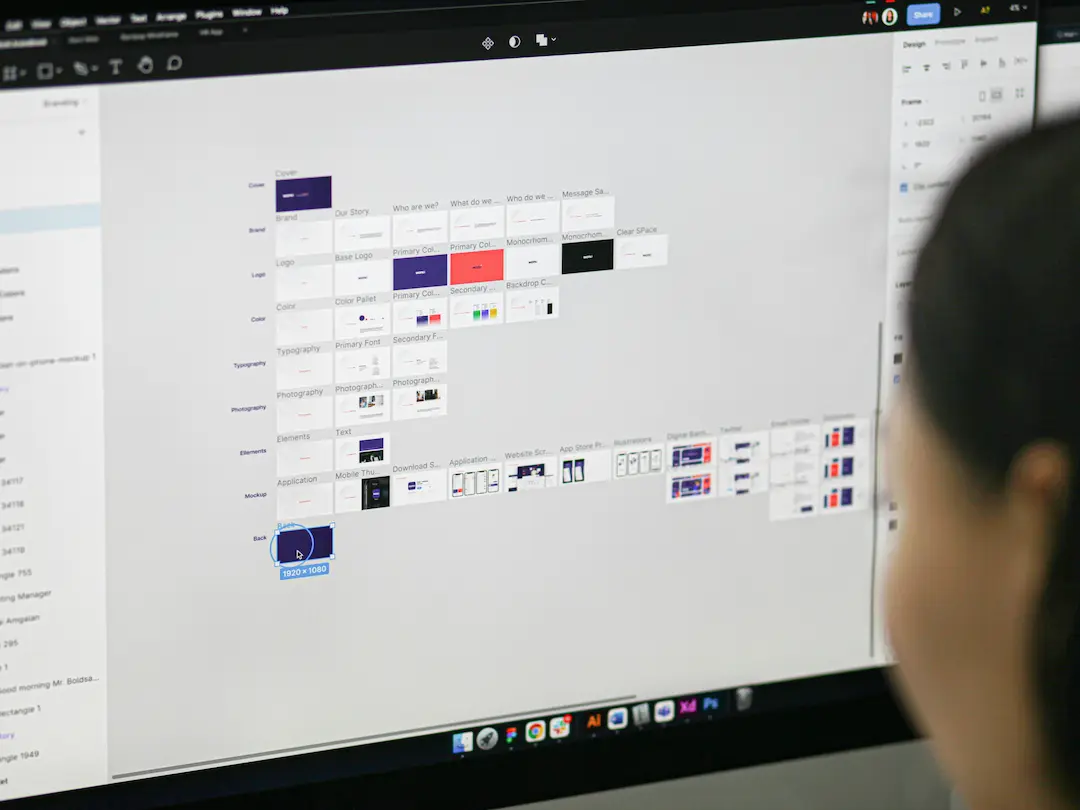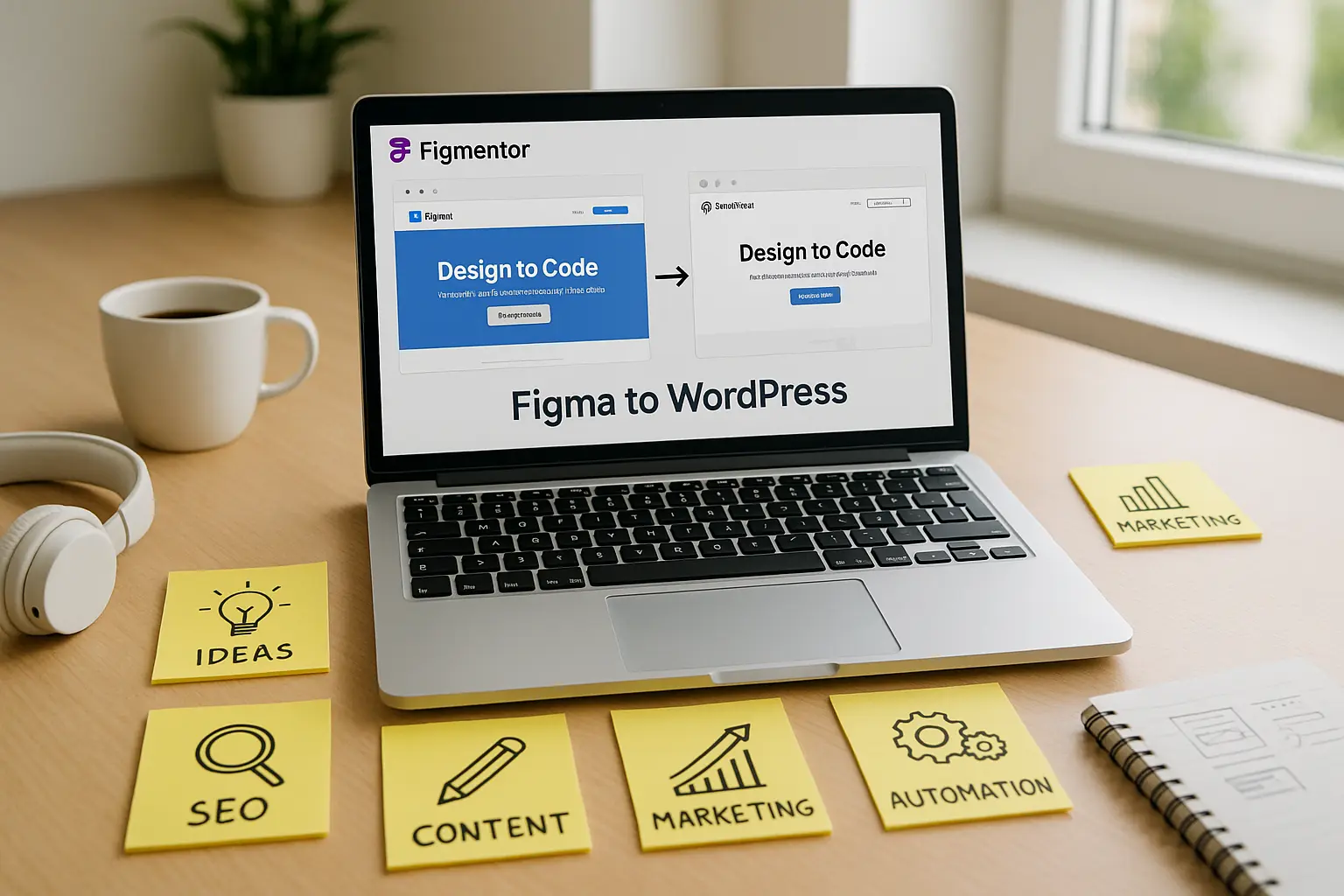Real Use Case: From Figma to Elementor in 1 Hour
In today’s fast-paced digital landscape, clients expect web designers and developers to deliver results quickly-without compromising on quality. This article showcases a real-world example of how a fully designed landing page in Figma can be transformed into a fully functional Elementor-based WordPress site in under 1 hour, all thanks to the power of Figmentor AI.
This real use case demonstrates the step-by-step process from receiving a Figma mockup to deploying a live webpage, making it especially relevant , lancers, small agencies, and creators looking to streamline their workflow without writing a single line of code.
Introduction
The gap between design and development is often filled with delays, miscommunication, and technical bottlenecks. Tools like Figma make it easy to design, and Elementor simplifies WordPress editing. But integrating the two? That’s where many workflows fall apart-until now.
Figmentor AI is designed to bridge this gap by turning well-prepared Figma designs into Elementor-ready templates in minutes. This article follows a real client scenario to show how it all comes together, end-to-end.
Why Speed Matters in Web Development
Time is money. Whether you’re a solo freelancer juggling multiple clients or an agency managing tight deadlines, the faster you can deliver a live, functional product, the more competitive you become.
Traditional processes involve designers exporting assets, developers manually coding layouts, and QA teams fixing responsiveness-taking hours, sometimes days. But what if all that could be reduced to less than an hour?
Step 1: Receiving the Design Brief (5 Minutes)
The journey starts when the client provides a product landing page brief. The brief includes essential sections like:
- Hero Section
- Product Features
- Customer Testimonials
- Call-to-Action (CTA) Block
They also provide a wireframe or high-fidelity design in Figma, outlining layout structure and content.
Understanding the Client’s Needs
A quick discussion helps clarify the client’s goals, target audience, and functional expectations. This sets the foundation for design-to-development alignment.
Initial Design Review in Figma
Open the Figma file, and assess for key elements:
- Use of consistent styles and components
- Clear layer naming
- Layout symmetry
- Readiness for responsiveness
Step 2: Design Finalization in Figma (10–15 Minutes)
Before exporting, it’s crucial to prepare the file for Figmentor’s AI interpreter.
Naming Frames and Layers Using Figmentor Schema
Adhering to Figmentor’s schema is essential. This includes:
- Naming hero sections as
hero_main - Features as
features_grid - CTAs as
cta_primary, etc.
This consistency ensures that Figmentor AI can accurately map design components to Elementor widgets.
Auto-Layout and Responsive Groups
Use Figma’s Auto Layout to:
- Group related elements
- Ensure spacing consistency
- Enable responsive resizing
This preparation saves hours of manual spacing and alignment fixes later.
Using Figmentor AI’s Error Detection
Run a quick pre-check using Figmentor’s built-in error detector. It flags issues like:
- Overlapping frames
- Empty containers
- Improper naming or groupings
Fix them within minutes to avoid wasted export attempts.
Step 3: Exporting with Figmentor AI (2 Minutes)
With the file ready, it’s time to export.
- Select the main frame (usually the entire landing page).
- Click “Export to Elementor” in Figmentor.
- Within seconds, download a ready-to-import Elementor JSON file.
Thanks to the error checks, no credits are wasted and the output is accurate.
Step 4: Importing into Elementor (5–10 Minutes)
On the WordPress side:
- Open Elementor in your WordPress dashboard.
- Use the “Import Template” option.
- Upload the JSON file generated by Figmentor.
Zero-Rebuild Experience
The layout loads exactly as designed in Figma. No broken sections, no spacing disasters, and no missing components.
Compatible Features and Section Integration
The following sections load in flawlessly:
- Hero with headings and subheadings
- Grid-based features
- Carousel or stacked testimonials
- Actionable CTA buttons
Each section is treated as a modular, editable Elementor block.
Step 5: Final Touches and Optimization (15–20 Minutes)
With the design now live in Elementor, the final polish begins.
Styling and Global Settings
- Adjust global fonts and colors to match branding.
- Link buttons to actual pages or forms.
- Add hover effects and transitions.
Responsive Checks and Debugging
- Preview the design on tablet and mobile modes.
- Adjust padding, margins, and text sizes accordingly.
Pre-Delivery Quality Checks
Run performance tests, accessibility scans, and verify all links. Once everything checks out, send the live URL to the client.
Final Outcome: Design-to-Production in Under 1 Hour
In just 55 minutes, the client receives a fully functional landing page:
- Visually accurate
- Mobile responsive
- Pixel-perfect
- Built with zero code
- Directly editable via Elementor
This wasn’t a stripped-down MVP-it was a complete product-ready page.
Who This Workflow is Perfect For
- Freelancers: Deliver faster, increase client throughput
- Small Agencies: Save dev hours, allocate resources more efficiently
- Solopreneurs: Build high-quality sites without hiring extra staff
Advantages of Using Figmentor AI in Real Projects
- Cuts manual development by over 80%
- Prevents design inconsistencies
- Reduces communication friction
- Empowers non-developers to ship fast
- Eliminates padding/margin guesswork
Optional Add-On: 1-Hour Website Challenge Mini-Series
Turn this use case into engaging content:
- Record the process for a YouTube challenge
- Document each step in a blog post
- Offer behind-the-scenes insights for other creators
Series Title Suggestions:
- “1-Hour Website Challenge: Figma to WordPress with Figmentor”
- “Speed-Build: Figma to Elementor in Real Time”
Frequently Asked Questions (FAQs)
1. Does Figmentor AI work with any Figma file?
Figmentor AI works best with clean, structured Figma files that follow its naming schema. Unorganized files may require manual prep before export.
2. Can I customize the Elementor page after import?
Yes. Every section is fully editable within Elementor. You can tweak styles, content, animations, and layout without any coding.
3. Is this method suitable for client work?
Absolutely. This workflow is ideal for professional-grade client deliveries and reduces turnaround time significantly.
4. What happens if there are errors during export?
Figmentor AI includes an error detection tool to pre-scan your Figma file. Fix issues before export to avoid failed attempts or wasted credits.
5. Do I need Elementor Pro to use the output?
Most core features will work with the free version, but some widgets or templates might require Elementor Pro.
6. How is this better than traditional design-to-dev handoff?
This method eliminates the need for slicing, coding, or QA between design and development-cutting the entire cycle down to under 1 hour.
Conclusion
The ability to transform a full Figma design into a responsive, production-ready WordPress page using Elementor-in under an hour-was once unimaginable. With Figmentor AI, it’s not only possible but practical.
By reducing complexity, minimizing manual tasks, and empowering creators of all levels, Figmentor AI stands out as a game-changing tool for modern web workflows.
If you’re still manually rebuilding designs, it’s time to evolve your stack.




